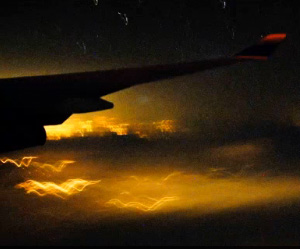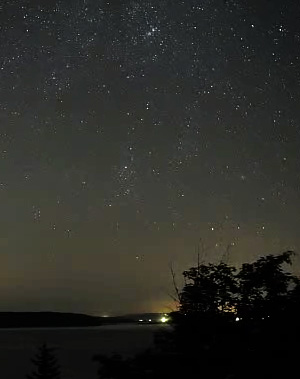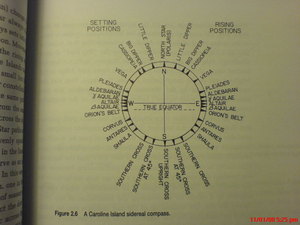tecznotes
Michal Migurski's notebook, listening post, and soapbox. Subscribe to ![]() this blog.
Check out the rest of my site as well.
this blog.
Check out the rest of my site as well.
Feb 11, 2009 8:30am
sky movies
These are the two most affecting things I've seen in 2009.
The first is a video from James Leng, something I saw on Aaron's delicious feed:
It's a timelapse video, recorded through the window of a half-empty flight traveling from Amsterdam to San Francisco. Turns out James is a friend of Sha's, and the video probably made its way over due to our work on Flickr Clock.
Here's what I had to say about it on the comments page:
The stars are actually the bit I find most interesting: seeing cities whoosh by like that, while the stars in the background remain mostly still reminds you who's really moving out there.
(that bit made it into the Guardian piece too)
The second came via Ori, and similarly records the night sky in motion:
This one spans an entire night, somewhere on the coast of Maine, possibly by someone named Till Credner. The camera pans slowly from left to right, and on a few occasions planes stream by overhead. One of these planes might be James heading for California.
What ties these together is the visible relative motion of the stars. The earthbound video shows the entire dome of the sky turning slowly, while the airplane video shows the stars eerily standing still as the landscape moves below them. I'm reminded of Edwin Hutchins's explanation of the sidereal compass and alternative frames of reference in Cognition in the Wild:
Picture yourself on a Pulawat canoe at night. The weather is clear, the stars are out, but no land is in sight. The canoe is a familiar little world. Men sit about, talk, perhaps move around a little within their microcosm. On either side of the canoe, water streams past, a line of turbulence and bubbles merging into a wake and disappearing into the darkness. Overhead there are star, immovable, immutable. They swing in their paths across and out of the sky but invariably come up again in the same places. ... Everything passes by the little canoe - everything except the stars by night and the sun in the day.
I think if there's a broad class of subjective experience I find most addictive, it's the perspective shift connected to a sudden adjustment in point of view. The perception of the stars as motionless with the earth swinging through them can be just barely glimpsed in these short clips, similar to Patrick Farley's allegedly-Chillits-inspired 1998 strip Overheard At The Rave. One of my goals for 2009 is to vacation in a place with proper dark skies. Natural Bridges, or maybe the nearby Joshua Tree.



Comments (3)
http://www.newzealand.com/travel/media/features/naturesustainable-tourism/nature&sustainability_yearofastronomystarlightreserve_features.cfm NZ is attempting to creat a World Heritage Starlight Reserve. A national park in the sky. In cali, I bet Yosemite is quite clear, too.
Posted by gabe on Friday, February 13 2009 11:22am UTC
Amy Balkin has proposed turning the atmosphere into a World Heritage Site: http://www.publicsmog.org/
Posted by Eric Rodenbeck on Friday, February 13 2009 5:50pm UTC
The sky park proposal sounds excellent, like Natural Bridges here. I've also heard proposals for quiet parks - areas perhaps as small as one inch square where no man-made noise may intrude. It may have been on NPR a few years ago, I don't remember any other details.
Posted by Michal Migurski on Friday, February 13 2009 9:39pm UTC
Sorry, no new comments on old posts.